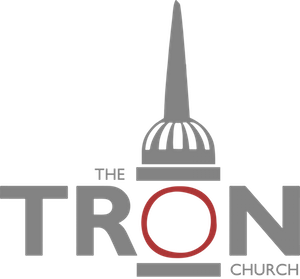42 Then he led me out into the outer court, towards the north, and he brought me to the chambers that were opposite the separate yard and opposite the building on the north. 2 The length of the building whose door faced north was a hundred cubits, and the breadth fifty cubits. 3 Facing the twenty cubits that belonged to the inner court, and facing the pavement that belonged to the outer court, was gallery against gallery in three storeys. 4 And before the chambers was a passage inwards, ten cubits wide and a hundred cubits long, and their doors were on the north. 5 Now the upper chambers were narrower, for the galleries took more away from them than from the lower and middle chambers of the building. 6 For they were in three storeys, and they had no pillars like the pillars of the courts. Thus the upper chambers were set back from the ground more than the lower and the middle ones. 7 And there was a wall outside parallel to the chambers, towards the outer court, opposite the chambers, fifty cubits long. 8 For the chambers on the outer court were fifty cubits long, while those opposite the nave were a hundred cubits long. 9 Below these chambers was an entrance on the east side, as one enters them from the outer court.
10 In the thickness of the wall of the court, on the south also, opposite the yard and opposite the building, there were chambers 11 with a passage in front of them. They were similar to the chambers on the north, of the same length and breadth, with the same exits and arrangements and doors, 12 as were the entrances of the chambers on the south. There was an entrance at the beginning of the passage, the passage before the corresponding wall on the east as one enters them.
13 Then he said to me, “The north chambers and the south chambers opposite the yard are the holy chambers, where the priests who approach the Lord shall eat the most holy offerings. There they shall put the most holy offerings—the grain offering, the sin offering, and the guilt offering—for the place is holy. 14 When the priests enter the Holy Place, they shall not go out of it into the outer court without laying there the garments in which they minister, for these are holy. They shall put on other garments before they go near to that which is for the people.”
15 Now when he had finished measuring the interior of the temple area, he led me out by the gate that faced east, and measured the temple area all round. 16 He measured the east side with the measuring reed, 500 cubits by the measuring reed all round. 17 He measured the north side, 500 cubits by the measuring reed all round. 18 He measured the south side, 500 cubits by the measuring reed. 19 Then he turned to the west side and measured, 500 cubits by the measuring reed. 20 He measured it on the four sides. It had a wall round it, 500 cubits long and 500 cubits broad, to make a separation between the holy and the common.
Another lesson we may gather from these chapters relates to the centrality of worship in the new age. The ultimate goal of all God's dealings with His people is worship and the more God's plans and purposes are fulfilled in us and for us, as individuals or as a fellowship, the more worship will be the key note. A deepening spirit of worship is one glorious sign that God's purposes are being fulfilled in a people. What we need to ask ourselves, in the light of this, is 'are our Sundays becoming more worshipful, is a deeper sense of the divine Presence brooding upon us, is there a deeper sense of the divine joy pervading our hearts?' If the answer to these questions is 'yes', it means that God's purposes are being fulfilled more and more among us and, as a corollary to this, the abiding presence of the Lord in the midst of His people; the Lord is there - Jehovah Shammah - this is the note with which Ezekiel concludes his prophecy (48:35). Furthermore - and this follows from what has been said - there are the blessings that will flow from the Presence of the Lord to the barren places of the earth (as we shall see later in the vision of the river of living water in ch 47). And finally, both in the allocation of the many duties in the temple worship and the sacrificial system, and in the allocation and apportionment of the land to the tribes of Israel, we have the idea of everyone having his due task and responsibility to fulfil, and his due privilege in sharing in the service of God. These are rich and fruitful lessons that we do well to ponder deeply, day by day.
